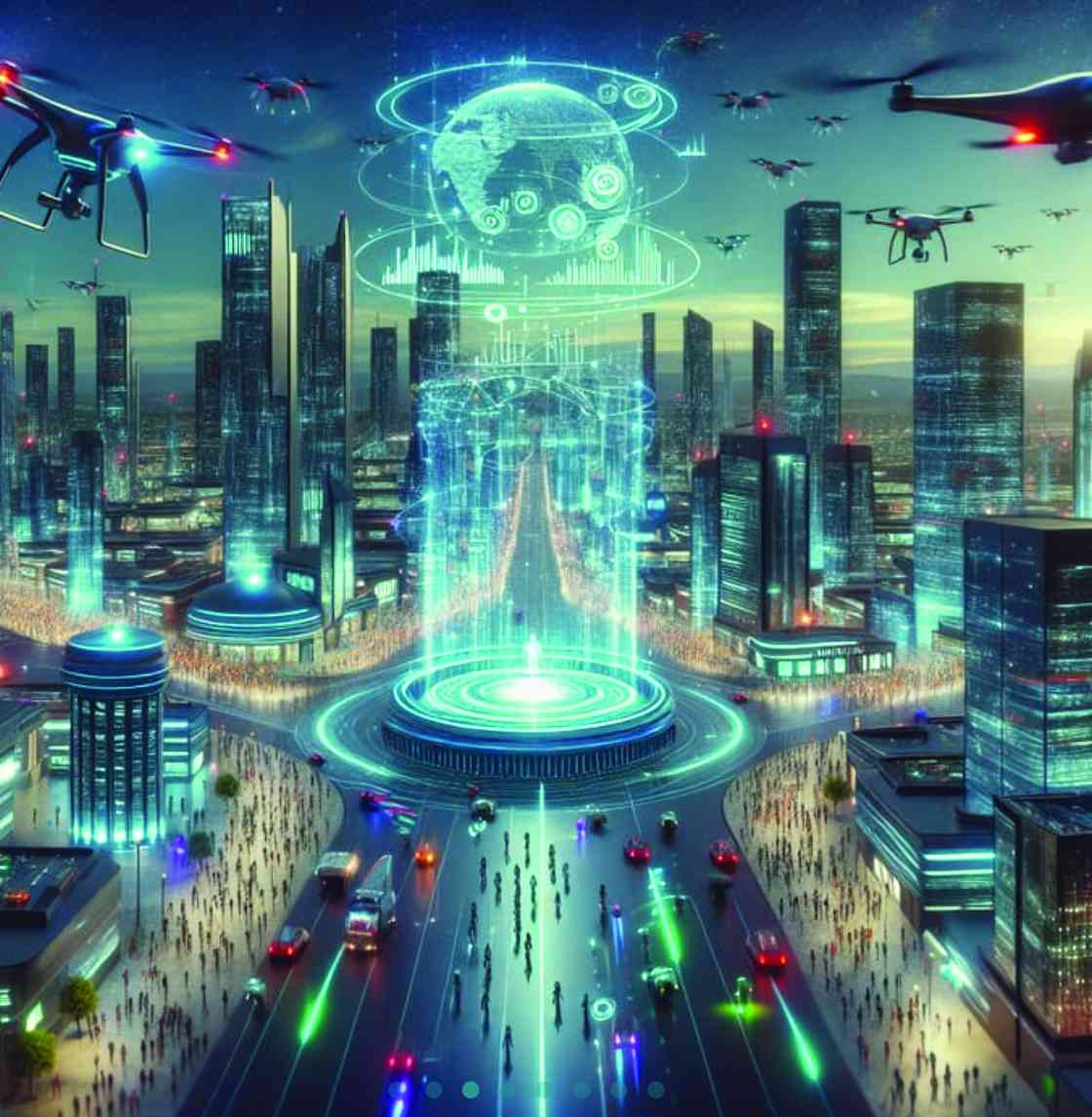
IT is late 2021, the balconies across the Manhattan skyline are full as the occupants witness the mesmerising sights of the morning sunrise.
Accompanied by the distant sounds of the city’s morning rush, which have become a rarity after almost 24 months of seclusion, they are reminded that there is nothing quite like a New York City’s sunrise.
Some 7 000 miles away in the heart of Seoul, it is a hustle and bustle — from street food to Michelin-starred restaurants.
The atmosphere is electric with the streets alive yet again as people come out in numbers after the lockdown to enjoy a night out. Likewise in the tip of southern Africa in the outskirts of Cape Town, Khayelitsha — the warm community spirit gusts through the atmosphere as the streets bustle anew with vendors selling fresh produce and handcrafted goods.
The inhabitants of all these corners of the world possess something in common, a beacon of hope after the apocalyptic Covid-19 ravished the world for the previous two years.
It was the first time since the Spanish flu of 1919 that the world had to lie torpid. Lo and behold came job losses, then industries collapsing and the loss of human life.
Thankfully, the pandemic has been contained in most parts of the world in as far as human life is concerned. Unfortunately, the bogeyman is still in town. The world continues reeling from the aftermath of the pandemic as seen by rising global inflation.
A taxation without legislation
- Young entrepreneur dreams big
- Chibuku NeShamwari holds onto ethos of culture
- Health talk: Be wary of measles, its a deadly disease
- Macheso, Dhewa inspired me: Chinembiri
Keep Reading
The issue of how and why global inflation is at record highs is an important feature of this article. Of particular interest is that Economics 101 taught us that inflation hurts a country’s attractiveness as an investment destination, makes resource allocation decisions difficult and worsens the gap between the rich and the poor.
The consensus is its undesirability. So how did we find ourselves here?
For the first time Monetarists (believers of that money supply is the driver of economic factors) and Keynesian proponents (believers of that governments should intervene to save ailing economies) converged to respond to the pandemic.
Central banks chopped interest rates to record lows and purchased assets in the market while governments redirected budgeted expenditure, creating extensive stimulus packages to assist comatose businesses and those individuals who had lost their jobs.
As reported by the United Nations Department of Economic and Social Affairs, the central banks of Japan, the United Kingdom, the United States, and the Euro area added US$10,2 trillion in security assets while chopping interest rates to near zero.
These actions flooded the market with liquidity by increasing the supply of money and in-turn granting banks the ability to lend at lower rates. The consistency with which governments across the world applied this indicated that most people felt this was the right move.
Economics is not a science since no economic theory lasts forever. Not even countries where debt-to-GDP ratios are already sky-high raised eyebrows with the helicopter money that came through from their fiscal authorities.
This ratio allows for comparability of debt level between countries. It reflects a country’s public debt relative to what it produces and hence indicates the odds of it repaying its debt.
It can thus be seen as a barometer for assessing the default risk. The graph shows a selection of countries with debt-to-GDPs of more than 100%.
Notice the spike in the ratio as denoted by the steepening of each of the line graphs as we entered the Covid pandemic period. This indicates how the countries loaded more and more debt to stimulate their ailing economies.
Meanwhile, a cutback of interest rates effectively reduces the cost of borrowing money. It is by no coincidence that whenever the central banks reduce interest rates, the probability of default by customers decreases and banks are willing to lend more thereby increasing money supply.
As the pandemic spread across the world, governments quickly rushed to enforce hard lockdowns to avert the situation of overwhelming their health systems while they capacitated these facilities.
While this seemed like a noble move, a hard lockdown came with complete downtime and production halts. Asia was hit by a shortage of computer chips which in turn forced automobile factories across the globe to halt their assembly lines as these chips are integral components in the functioning of motor vehicle computer boxes.
Simultaneously, with confinement of people in their homes, came an involuntary affinity for them to save money and an inability to spend it.
Fast-forward to 2023 inflation has soared to record highs globally. The oversupply of money brought about by the helicopter money from governments, cuts in interest rates during the pandemic and people’s sudden ability to spend their savings, which they could not during the hard lockdown, is chasing the few goods that survived supply chain disruptions and production halts during the hard lockdown in a typical case of too much money chasing too few goods. Prices are bound to soar to balance out demand and supply.
Taming this “long-Covid”
As paracetamol is to a headache, so is raising interest rates to inflation. Central banks across the globe have rushed to issue their usual prescription. Can we say we did not know this would happen? Or is this the point where we sneer-and-snarl as if to say, “we told you so”?
Yet again, when will we learn? But learning is a process of unlearning and relearning. So, the vicious cycle is a human phenomenon.
So how exactly does raising interest rates help in the curbing of inflation? High interest rates make borrowing a lot more expensive while making saving more attractive thus reducing money supply.
Everything that has been financed i.e., through hire purchase agreements, mortgages, instalment sale agreements, credit cards amongst a few will become more expensive to service monthly leaving less disposable income amongst households.
The reduced ability and incentive to spend reduces aggregate demand in the economy and in turn curbs inflation in the short-term.
The unlikely villain
The war between Russia and its eastern neighbour Ukraine has been the least likely and unprecedented culprit, which has exacerbated the situation.
Considering that Russia supplies approximately 10% of the global supply of fuel, it was bound to sting when many countries moved to ban procurement of oil and gas from Russia and impose many sanctions on the Eastern European country.
Ukraine is also a heavyweight when it comes to wheat, corn and barley production, accounting for 10%, 15% and 13% of the global market in each of the respective grains.
As the adage goes, when two elephants fight it is the grass that suffers. What is important to note about this hog-tie is that the inflation caused by the Russia/Ukraine war arises from increases in prices of production inputs rather than demand for products rising faster than the products can be supplied.
This is important as it determines what response to employ. As mentioned earlier, central Banks have been aggressively raising interest rates, but is this the appropriate response?
To raise interest rates or not to
Tightening policy is nothing but a credibility preservation strategy by Central Banks because that is all they know and have done.
While this may have been effective in reducing money supply and combating the demand-pull inflation brought about by the Covid and post-Covid periods, it comes out as an unimaginative, and a blunt instrument in as far as solving cost-push inflation arising from the Russian/Ukraine war.
One begs the question as to why a Central Bank would continually hike rates more than five consecutive times. For example, the Bank of England, US Federal Reserve and South African Reserve Bank have each hiked interest rates 12 and 10 successive times respectively.
The long-term solution to inflation requires measures that ensure stable economic growth.
To build resilience, countries must deal with the supply side bottlenecks that constrain economic growth.
Investing in the right assets
There is thus a huge need to invest in the “right” infrastructure to make economies more resilient to the geopolitical changes.
In 2010, the euphoria around the soccer World Cup in South Africa obscured the possibilities of a bust and distracted the powers-that-be from everything awful that was to come.
The country’s fiscus spent more than US$3 billion on new stadiums and the country’s first high-speed express commuter rail system, the Gautrain amongst other things.
The stadiums currently run at tremendous losses annually while the latter enjoys a revenue guarantee with the Government in which if a minimum level of revenue is not attained, the state coughs up the difference - all at the expense of the taxpayers.
Thirteen years later the economy is reeling from a crippling power crisis that has an errant economy on its knees — with a possible total grid collapse on the horizon.
The unreliable energy has led to rising running costs, reduced productivity and is a repellent of foreign direct investment.
Amid all other factors causing inflation this is a perfect storm for the economy.
Were these infrastructure investments optimal? Or expansions of energy sources would have been a better reap?
If economic surpluses are channelled into real investments, there would be assurance that there is no trade-off between growth and inflation.
What else can be done?
Economies need the types of long-term investment that lead to reducing supply bottlenecks, including indulging in a fair degree of decoupling, while avoiding excessive fragmentation, and excessive balkanisation.
All this points towards reducing correlation between markets and lessening dependence amongst countries thus maintaining resilience even when major markets are in turmoil.
Case in point is the export-driven Brazilian economy and currency which have performed well on the back of rising commodity prices like oil and other raw materials.
Oxymoronic as it may sound, this is all thanks to Russia’s invasion of Ukraine.
Ordinarily, high interest rates negatively affect the value of currency exchange rates in emerging market economies.
In times of global financial tightening, investors often look to invest capital in higher-yielding currencies, causing a flight of capital out of emerging markets and causing a decline in the value of their currencies.
Brazil’s decoupling has seen a reverse in capital flow wherein foreign-direct investment doubled to more than US$90 billion in 2022.
In conclusion
As time is telling, the words of the American economics doyen and 1976 Nobel Laureate, Milton Friedman have proven that economics is a science after all — “inflation is always a monetary phenomenon”.
The ghost of Friedman surely must be haunting us.
We must learn to be better prepared for the next pandemic by saving more during periods of economic growth, investing in the right assets and triggering automatic stabilisers in downward business cycles to limit the amount of recession and stagflation.
Mpofu is a chartered accountant and a member of the Institute of Chartered Accountants of Zimbabwe.










